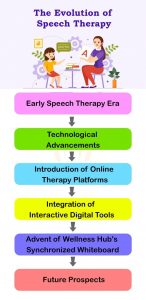Exit Interview Management
By Prapoorna M
Last Updated: November 27, 2021
Whenever an employee leaves an organization either voluntarily or through termination, the management representatives, usually HR managers, conduct an interview called Exit interview, with that person. This interview helps to collect feedback that can help the management in making decisions on future practices, recruitments, and retention in the company.
The time of the exit interview is the separation stage of the Employee Life Cycle (ELC). When the employee spends certain tenure of their career life in the organization, the opinions formed about the work culture, the colleagues, the superiors and the other staff; the nature of work and the career prospects, etc. are really important. Gathering such information would help the organization in making some future plans.
Participation of Employees
Exit interviews are typically voluntary. Participation in an exit interview depends on the process in which it is conducted. Some companies don’t bother much about it and conduct using a simple paper or online survey to collect the data, which least interests the employees and the participation would be nearly 30% or even less. Some conduct exit interviews by speaking to the employee in person, which are attended by 50% of the employees who exit. But some companies conduct these exit interviews through a third party, who collects the data required from their employees.
In case of such interviews, the employees feel a sense of relief to talk freely about their company, manager, work culture, compensations they get, etc., any complaints or issues that bother them. The exit interviews could give insights into the employee turnover rate in the company. If discussed and acted upon, the turnover rate can be reduced. The employees leaving may give insights into the problems in the office that was not otherwise obvious.
Any inadequacy of workplace training can be highlighted and discussed to know the real situation. Major problems that didn’t come into light till then, such as harassments or discrimination claims could be discussed as the employees leaving would not be bothered about reprisal. Knowing them would help the management in maintaining good office culture.
Kinds of Exit Interviews
Exit interviews may be conducted by the management personnel or can be outsourced to an HR service provider or a third-party. These can be conducted in person, over the phone, mail or an online survey.
Face-to-face/ In-person Exit Interview
The exit interview conducted in a room, by having a person-to-person conversation with the employee who is leaving, can be termed as In-person or Face-to-face Exit interview.
Pros
The exit interview conducted face-to-face lets the interviewer knows the true feelings of the employee and it helps the organization have genuine feedback. The collection of information can be done in a structured way and real-time accuracy can also be checked. The completion rate of the interview will be high in this method.
Cons
But if the interviewer is the HR personnel of the organization, the employee is less likely to deliver genuine feedback as there would be the need for positive feedback for him from this company in the future regarding his performance. Also, if the person interviewing is one of the reasons for the employee to leave, there won’t be any chance of receiving the fair output.
Instead, if the interview is conducted by some third party person, it could be expensive. In larger companies, it would be too time-consuming to conduct an in-person interview for all the employees, especially during employee layouts. Decoding the feedback and storing the information could be sometimes tough during in-person interviews.
Telephone Exit Interview
The Exit interview conducted through a telephonic conversation with the employee leaving the organization can be understood as Telephone Exit-interview.
Pros
The advantages of phone interviews are also the same as face-to-face. In addition to that, the interviewer need not pay any visual attention and hence can refer to other points and documents while talking. The interview can be recorded for further reference and real-time coding of the feedback can be done. Entering the data and probing more questions can be easily done. The scheduling of a phone interview is much easier than a face-to-face interview.
Cons
Employees could be reluctant to verbally share the genuine feedback. Conducting a phone interview could be time-consuming for the company HR and expensive if out-sourced.

Paper and Pen Exit-Interview
The exit interviews that are conducted by giving a form for the employee to fill or sending an mail to the employee to fill up are called Paper and Pen Exit Interviews.
Pros
The personnel who conduct the interview need not allot much time on this, compared to the previous ones. The employees, who feel reluctant to provide some information directly, prefer to write here.
Cons
Most of the employees neglect to take part in this. After the interview, the compilation of data would be a laborious task when the number of employees is high.
Online Exit Interview
The exit interviews that are conducted using an online tool are called Online Exit Interviews.
Pros
Employees are usually willing to participate and give genuine feedbacks as they are not being monitored directly. Data compilation and result calculation are done by the tool itself and hence time-saving for the management personnel.
Cons
If the tool is inefficient, the analysis and calculations may go wrong. Information security could be another concern.
What has to be Done?
Before an employee leaves an organization, as the information is given a few months prior to the date of leaving, the replacement has to be taken care of. Knowledge transfer regarding the tools used and the duties of the employee should also be done beforehand. Any documents and forms related to the office are collected, backups are taken and passwords are disclosed.
Handing over the office equipment, devices and tools if any, submitting the related No-objection forms, and signing the required sheets are also part of the quitting process. It’s also an opportunity to let the employee know about the benefits, pay yet to be reimbursed, and any agreements that need to be discussed. The employees, who leave, usually collect the benefits, incentives, and compensations that have to be reimbursed by the management before the exit interview is conducted.
What Can be Asked?
There can be a range of questions that are asked during an exit interview that might help the organization through the employee exit process.
Why?
The first and foremost question that arises when someone leaves an organization is, why. This is actually big question which contains most of the crucial information. If the employee quits an organization due to his/her personal reasons, like compromising with spouse’s transfer or ill-health, etc., then it’s okay. But, knowing the genuine reason behind this is really important.
Any reasons like the employee’s daily job frustrations, problems like discriminations, harassments, or irrational biases from senior staff members or the team leaders, opinions on work environment and the absence of job satisfaction should be clearly identified. Employee retention is an important aspect that any organization should take care of.
In case, the organization expels the employee, the reasons like functional, emotional or behavioral reasons are to be noted. The outcome of employee engagement trials regarding the improvement like the training offered, motivational encouragements like recognition, hikes, and incentives or having a personal talk with the manager, etc. are to be considered. The reasons that lead to the layoff have to be analyzed.

Other Questions
If it happens that the employees whoever leaves the organization, gives feedback about the ill-treatment or incapable manager of their team, or maybe the ill review practices or unrevised pay scales and benefits, such complaints are to be heard and worked on, to decrease the employee turnover rate.
Other questions such as the below are included in Exit interviews.
- “Do we need to improve? Or what areas of the company need improvement?” can be another important question that requires an answer as it differs from every person’s point of view.
- Have you enjoyed working with us? This answer reveals the existing work environment.
- Knowing what the employee liked most and least, would help the management know-how their practices are being received by the employees.
- Asking about the training and development in the office provides you feedback on your effectiveness in helping your employees keep up.
- A random question like “What do we do well?” can also be thrown to know what the organization excels in, in their view.
- Asking if they would recommend this office to any of their friends knows how much they feel related and how much the company is succeeding in making the employees feel belonged.
- Questions to know the details and the reasons for choosing a new employer can be inspiring for the organization to plan future commitments.
- Know about the scope of open communication in the company and how well are the problems being discussed.
- Always try to find out if the company can do anything to make the employee stay so as to cross-check on the employee retention strategies, the company is implementing.
Purpose of the Interview
The Exit interviews are conducted to fulfill certain purposes that help the organization make crucial decisions. As a part of employee engagement, Exit interviews help the management in dealing with the following aspects.
- To reduce employee turnover
- To increase productivity and engagement of existing employees
- To reduce absenteeism
- To sustain performance
- To prevent any litigations after the employee leaves
Rather than the employees currently working, the employees leaving are more likely to provide genuine feedback without the fear of retaliation. The condition of a real work environment is not known until genuine feedback is heard. Such feedback helps in making further decisions to increase employee retention in the organization. In order to frame some action items or implement some practices in the office to maintain the above-mentioned conditions, exit interviews help a lot.
When an employee satisfaction survey is conducted, the employees expect the management to immediately take action on the result. But the same feedback can be obtained from the exit interview where the management can be free from the pressure of immediate action. Here there’s time to review the data and make a decision so that it doesn’t cause concern for the remaining employees.

Things to be taken care of
Be it a resignation from the employee or a company layoff, there’s always bewilderment and chance of missing out something at the last minute. In order to avoid that, it’s better to recall the duties of each one of the persons involved in the exiting procedure of an employee.
During the process of resignation, the employee is expected to do the following.
- Submitting the resignation letter; is usually sent through the mail. But some prefer to ask for a hand-written resignation letter and at least a two week notice period.
- KT is a must; the transfer of work knowledge to the replacement is mandatory in many jobs.
- Some jobs where the knowledge transfer is of no concern skip this.
- Wind up; finishing the current work or project in hand is a must for the employee.
- No personal things; deleting or transferring any personal contents in the office system, desk and related areas are mandatory.
- No exemption; though it is a normal employee or someone from a higher cadre, the company’s policies are to be duly followed.
- The manager of the employee is expected to do the following.
- Informing HR; the manager of the team should be aware of the termination and should inform the HR manager about it.
- Finalize things; the TL or the manager should plan the work schedule of the employee to see that the current project gets finished on time before the employee leaves.
- Time Management; Information on how much time it takes for the knowledge transfer to a replacement or trainee or the members in the group should be obtained accurately. Task distribution should be done accordingly.
- Replacement; in case the replacement is found, the manager should ensure the knowledge transfer. Otherwise, the work should be distributed among the team until a replacement is found.
- Requesting replacement; it it’s the manager’s or the TL’s duty to request the HR personnel to recruit a replacement. It is highly recommended to involve the manager in the selection process while recruiting a replacement.
The company HR personnel also has certain duties such as
- Communication; HR manager has the responsibility of communicating between the employee and the top management about the pending bills and documents any left.
- Completion; the final payment process including the compensations pending to be reimbursed should be cleared on time.
- Discussion; HR should also discuss with the employee’s manager on how immediate should a replacement has to be recruited, how far can the team manage without a replacement, or if the work can be distributed among the team by not at all recruiting a replacement.
- Updating; the HR personnel also have the duty to update the organizational charts and company directory.
- Finishing; Scheduling and completing the exit interview or exit survey can also be done by an HR.
- Exiting Documentation; the service certificate, the relieving order or the letter of reference stating the tenure of employment are to be delivered.
- Thanking; it is a kind gesture to conduct a farewell meeting, thanking the employee for the services offered with a bouquet and a gift as a token of appreciation.
In IT companies, the IT professional or the system administrator has some tasks to complete during this process.
- No passwords; No office systems or devices or any other tools, software, etc. on office purpose should be locked. All their passwords should be collected and the system admin should change them.
- Delete accounts; all the accounts created on the name of the employee like office mail id, attendance id or ids related to any HR tools or wellness tools, etc. should be disabled.
- Recover; the IT professional should collect all the company related stuff like materials, devices, or objects given to the employee during the tenure of the employment. The clearance form can also be signed according to the company’s policies.
- Get them ready; the system admin should make the system ready for the replacement to use.
These are the common steps in dealing with the existing process of an employee. The better the off- boarding experience, the more the employee is likely to co-operate even after they exit. Though an employee leaves an organization, there are many chances that they may come back again and apply in the same company. Such boomerangs often happen.
But it is likely to happen when the employee has a great off-boarding experience. Also, many people who have a great time working and a warm off-boarding experience are likely to recommend the company to their friends.
Looking for a helping hand in the exit process of your employees? Wellness Hub offers EWA, equipped with a team of expert Psychologists and technical personnel to meet your requirements. Log on to experience a new dimension of employee engagement through EWA.
Book your Free Consultation Today
Parent/Caregiver Info:
Client’s Details:
* Error Message










